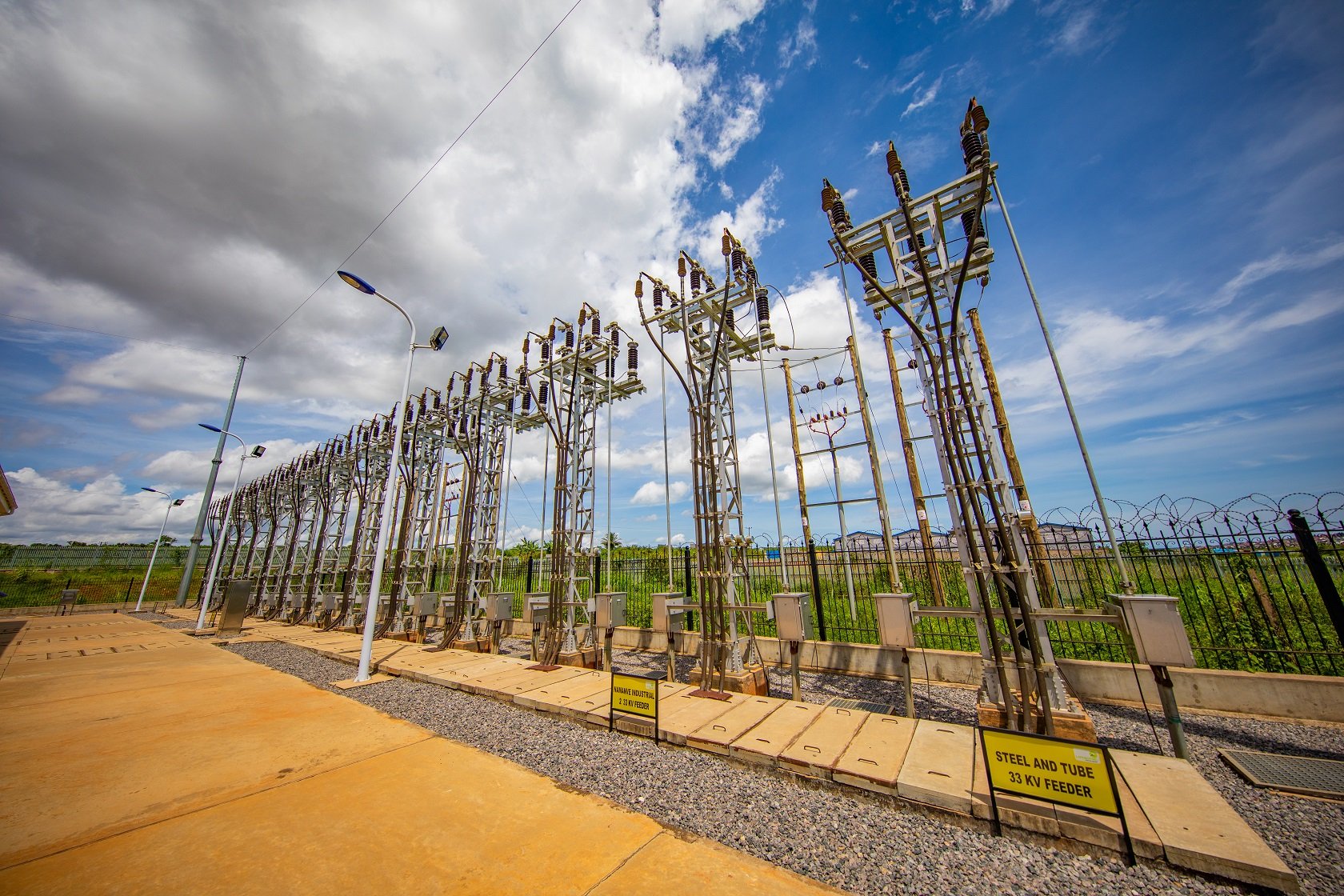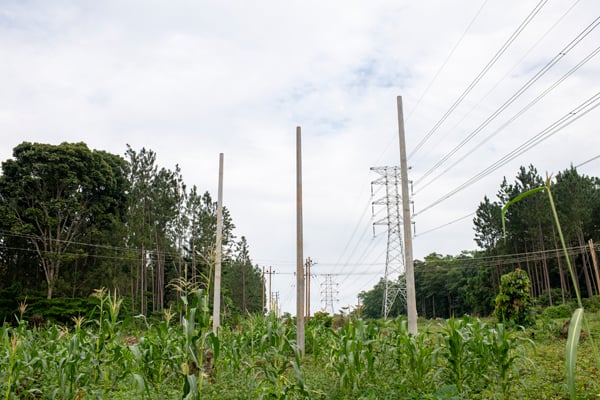Road to stable power is near but more is still needed - IFC

The electricity distribution network, according to Umeme, has grown from 16,000 kilometres in 2005 to more than 44,000 kilometres in Uganda. PHOTO | COURTESY
What you need to know:
Across the country transformer numbers have more than doubled, growing from 6,000 in 2005 to 14,000, which represents a growth rate of 133 percent
By 2005 it was impossible to think of electricity supply in some areas.
Much of what was available was limited to Kampala and town centres with many Ugandan giving in to available alternatives, many of which relied on paraffin. Even solar was inaccessible due to cost.
The electricity network was just 16,000 kilometres. This meant that night came early for many homes in rural Uganda and the dream of an improved livelihood was only a mirage.
However, year’s later power has reached many parts of Uganda with a network that currently covers more than 44,000 kilometres.
The transformation has been massive, providing various alternatives such as solar in areas were access has not been availed yet.
Across the country transformer numbers have more than doubled, growing from 6,000 in 2005 to 14,000, which represents a growth rate of 133 percent. Distribution capacity has also improved to 1,900 MVA from 550MVA during the period.
Energy losses have reduced from 38 percent to 17 percent while customer numbers have grown from 292,237 in 2005 to 1.52m as of June 2021.
However, the numbers are still looking small in comparison to the population. But even then, distribution capacity has improved from 50 per cent to 85 percent and this has not been without planning and investment.
According to Umeme’s financial reports, at least $700m (Shs2.5 trillion) has been invested in the distribution network since 2005 to ensure delivery of safe, efficient, and reliable electricity.
This has resulted into improved access, boosting manufacturing and innovation driven by the internet and information communication technology.
According to the International Financial Corporation - the private sector arm of the World Bank - whereas there has been visible progress over the last 10 years, there is more that is still needed to achieve access for the majority or for all in that matter.
Bernadette Tabeko, the investment officer infrastructure, sub-Saharan Africa at the World Bank, says Uganda has had some an exemplary utility investment model, adopting the finance and build approach to establish a sustainable energy sector.
“Uganda was a pioneer in sub-Saharan Africa when it comes to private sector investment in energy and making the power sector financially sustainable,” she says.
Public private partnerships, she says, are often necessary to achieve specific objectives, especially in sectors where there is insufficient economic incentives to attract investors.
So, the World Bank, which has been involved in Uganda’s electricity sector since the 2000s, believes there have been some good strides so far even as there is need for more investments.
However, to the consumers, the last five or so years have presented some differences.
Anil K. Bansal, is the deputy plant manager at Roofings Rolling Mills in the Kampala Industrial Business Park, Namanve. He believes the quality of power has greatly improved thus supporting business competitiveness.
“That is important for our production. We can now adjust our capacities to produce consistently,” he says.
Similary, just like Bansal, Duncan Tebaggalika, the Roofings assistant manager, electrical believes there has been a shift in electricity quality, improving from the heavy load-shedding around 2013 to some resemblance of reliability.
Roofings is one of the largest consumers of electricity with a load requirement of 20 megawatts per day and an annual consumption rate of between 70 and 80m units.
Therefore, according to Selestino Babungi, the Umeme managing director, these improvements have not come by chance. They have been achieved, he says, based on deliberate and strategic investment.
For instance, he says, in 2020 Umeme injected $2.37m to evacuate power from the UETCL substation in Namanve. The investment, which also included construction of underground cables with automated linkage to UETCL Namanve south and north substations, has enhanced supply to the Kampala Industrial Business Park, an industrial hub east of Kampala.
It has also led to stabilisation of power with drawn out linkages extending to the Mbalala Industrial Area, where Umeme has invested in interconnecting feeders to evacuate power from the UETCL Mukono north substation to feed projects such as the Tian Tang Industrial Complex, Kampala Cement Factory and the Katosi National Water and Sewerage Corporate plant.
James Byaruhanga, the Raxio Data Centre general manager, which was recently launched in Namanve, understands the importance of stable power supply in a business like the one he operates. “Our connection to the new Namanve substation is a lot stable than the previous one,” he says, noting that Raxio, just like any other data centre, requires 99.99 percent uptime, therefore, it must at all times have a reliable and stable power line.
As of October 2020, according to Uganda Investment Authority, sixty-two industries were operating in the Kampala Industrial Business Park while 141 projects had commenced construction.
In Uganda, industrial consumption accounts for about 56.6 percent of all power sold by Umeme. Therefore, it is important that such a sector is assured of supply.
Oustise Kampala
Beyond Kampala, Caroline Twine, the general manager of Global Village Tea in Kyenjojo District, says, for a long time they had suffered with blackouts.
However, a new substation that was recently built near the factory, has greatly improved supply.
In Mbale, east of Kampala, Francis Nafuye, a grains miller and owner of Mbale Millers, believes electricity supply has greatly improved both in quality and reliability.
“Bugema substation was expanded and that is why I think we are experiencing stable supply,” he says.
Still waiting
However, some areas are still waiting.
For instances, in northern Uganda, particularly in Gulu, power remains highly unstable with some areas going on for days without supply.
According to Babungi, Umeme has tried out temporary fixes, but there has been some investments, particularly in nothern Uganda to have permanent solutions.
“We have rehabilitated the Tororo-Opuyo-Lira-Gulu transmission line. We have upgraded the transmission line to pylons, replacing wooden poles in some parts that were [exposed] to rotting and bush-burning,” he says, but also notes that close to $2m has been invested in the Gulu-substation.
“We want to ring-fence northern Uganda and fix the challenges once and for all. We project that when Karuma is commissioned and integrated into our Gulu feed, the issues will have been significantly addressed,” Babungi says.
However, all this must feed into the puzzle that seeks to deliver reliable and affordable power to Ugandans in a sustainable manner.
Challenges of affordability
Amid all the improvements, affordability remains a serious challenge that has kept a number of Ugandans in the dark.
The nature of privately funded electricity is such that the more investments are made in the sector, the more impact on end-user tariffs.
Patrick Bitature, the Umeme chairman says there is a misconception that Umeme is responsible for the tariff structure, yet, behind it is a stretch of companies involved in transmission and generation.
“Umeme charges end-user tariffs as approved by the regulator. The tariffs meet costs of the entire electricity supply chain (generation, transmission, and distribution). Our contribution to large industrial tariffs is only 2 percent whereas transmission and generation accounts for 98 percent,” he says.
However, even then, he says, the commitment remains on efficiencies, growing consumption and system investments to evacuate power wherever it is.




